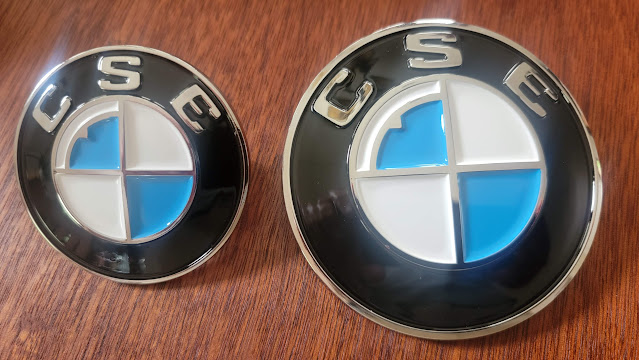We're Monitoring You
As mentioned previously, careless treatment of the Tesla battery modules can be catastrophic, leading to fire or other failure. Therefore, it is important to monitor the state of the cells to assure they are in proper temperature and charge or discharge.
To do this, a Battery Management System (BMS) is required. I'm using the popular Orion BMS 2. The BMS protects and monitors a battery pack by monitoring several sensors and using several outputs to control charge and discharge into the battery. The BMS measures inputs from cell voltage taps, a hall effect current sensor, and thermistors. Using the programmed settings, the BMS then controls the flow of current into and out of the battery pack by broadcasting charge and discharge current limits via the CANBUS to the OnBoard Charger (OBC). During and immediately after charging, the BMS will balance the cells using internal shunt resistors based on the programmed settings.
The BMS also performs other functions such as cell balancing by passively removing charge from cells which are higher than the rest of the battery pack. The BMS interfaces with J1772 AC charging stations as well as off-board CHAdeMO chargers (although I only support J1772 Level 1 or Level 2 charging in my car).
Additionally, the BMS has many redundant safeties. The BMS can be programmed to monitor for a breakdown in isolation between the battery pack and BMS’s ground, to detect a failure of the current sensor, and many other internal failures.
To connect the BMS with the Tesla batteries, a battery monitoring printed circuit board is mounted on one end of each Tesla module. It measures the voltage of each individual voltage cell and the temperature of positive and negative module terminals via thermistors built into each Tesla module. While the Tesla thermistors can be utilized with after-market systems such as the Orion, other cell-related functionality on the Tesla circuit boards is proprietary to their BMS and not useful to me. Therefore, the Tesla boards need to be removed from each module and bypassed. Fortunately, a number of after-market suppliers (057Tech, StealthEV, EV West) have created simple replacement boards that just provide convenient standard JST-XH plugs for connecting after-market battery management systems to the cell groups and thermistors. I used boards from 057Tech since they are provided when buying batteries from them.
 |
| The proprietary Tesla cell tap circuit boards need to be replaced |
 |
| All the new boards do is provide an easy way to connect to the cell tap wires (left) and thermistors (right) |
 |
| The 057 board being installed (new connectors are shown at lower right because the module is upside down in this photo) |
 |
| Halfway done |
Each battery module has 1 common (ground) and 6 positive voltage tap wires, one for each of the 6 "cells" in each module. There is also a ground and voltage wire pair for each of the two thermistors (one at the coolant in port and the other at coolant out).
The BMS monitors each individual cell tap to insure that cell voltages are not too high or too low (in accordance with the values programmed). Using the temperatures, cell voltages, the amperage going in and out of the pack (provided by a current sensor), and programmed values in the battery pack profile, the BMS calculates the pack’s internal resistance, individual cells’ internal resistances, and open cell voltages. From those calculations, the maximum charge and discharge current limits are calculated, and adjustments are made to the pack’s calculated state of charge if necessary. These calculations are also used in monitoring the health of the pack. Charge and discharge current limits are provided on the CANBUS and are programmed to trigger on/off digital outputs to allow or deny charging and discharging of the battery pack.
The modules are designed to be charged to a maximum voltage of 4.2 volts per cell for 25.2 volts per module and it is extremely important that this voltage never be exceeded.
The cells are essentially 100% discharged at a static resting voltage of 3.0 volts or 18 volts per module. Under high current loads, this lower voltage may of course be much less, but it is important that in a static condition, 3.00v is essentially fully discharged. Over discharge can similarly cause damage to the cell and it will not normally be readily apparent until the next charge cycle, which can then be catastrophic.
The cells have a fairly flat discharge curve making it difficult to determine state of charge by voltage alone.
I use the data broadcasted by the BMS over the CANBUS to display all sorts of information in my dash app. Most importantly is State of Charge (SOC), which allows me to calculate remaining range (in miles) and highest and lowest battery temperatures. I also use charging state data from the BMS CAN messages to display the charging screen when plugged in.
 |
| The charging screen, shown when plugged in |
 |
| The battery diagnostic screen |
 |
| The temperature diagnostic screen, combining temperature information on the CANBUS from the Orion BMS and the 057 Drive Unit Controller |
 |
| More BMS diagnostic information |
 |
| The Orion BMS allows full control of what information is sent over the CANBUS |



